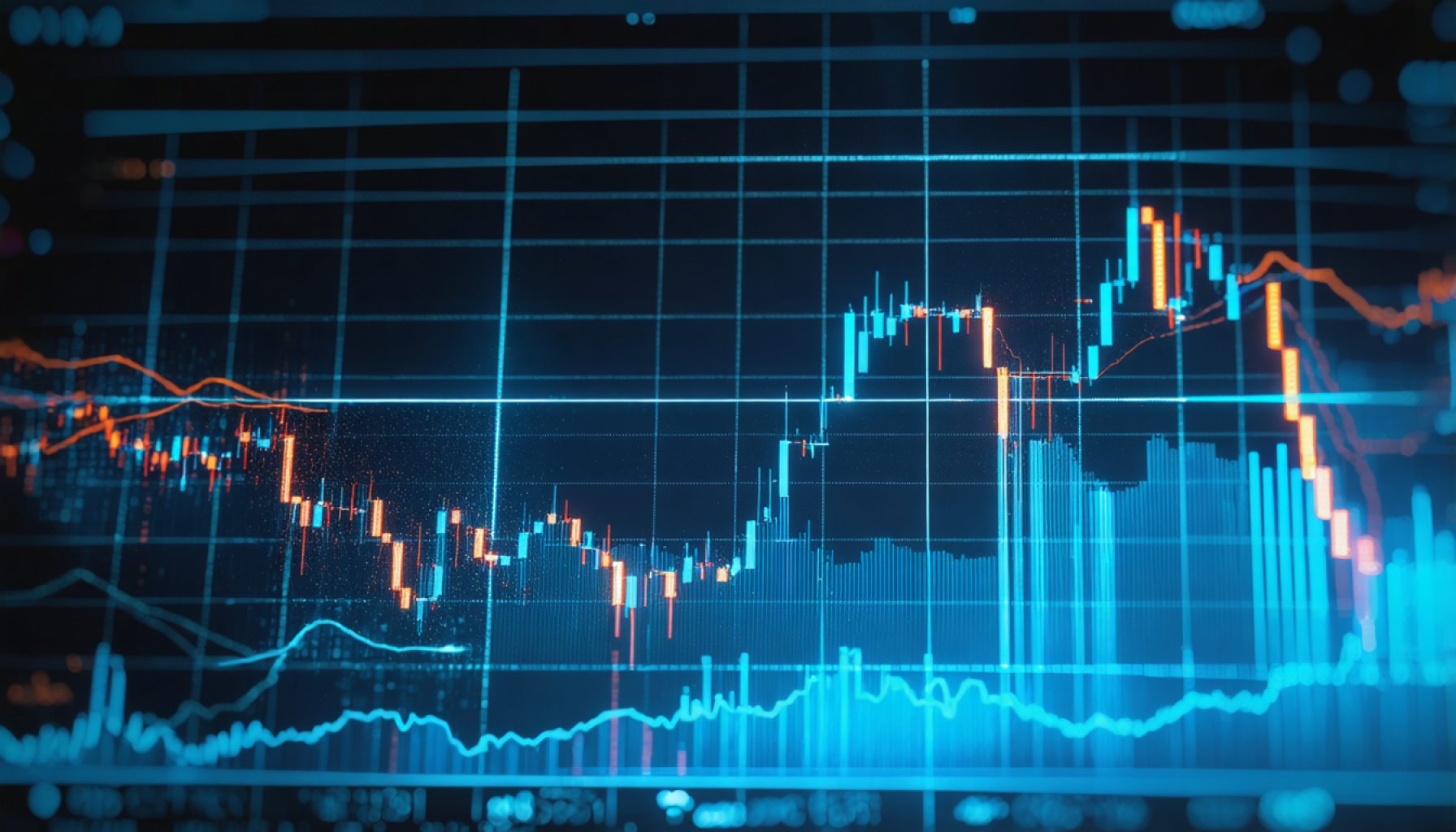- Major stock indexes, including the Dow Jones, S&P 500, and Nasdaq, suffered their largest losses of the year, fueled by anxiety over potential new tariffs and inflation.
- The Dow Jones Industrial Average plunged nearly 750 points, signaling a sharp downturn in investor confidence.
- The University of Michigan survey indicated a significant 10% drop in consumer confidence, raising concerns about inflation reminiscent of the mid-’90s.
- Home sales also faltered, contributing to the economic turbulence.
- Defensive sectors, notably consumer staples like Procter & Gamble and Kraft Heinz, saw gains as investors sought stability.
- Tech companies, including Nvidia and Palantir, faced notable share price declines.
- Speculation increased regarding Federal Reserve rate cuts to ease economic conditions, as both crude oil and gold prices dropped.
- In uncertain financial climates, shifting towards stability and resilience is often deemed the prudent strategy.
A whirlwind of anxiety swept through Wall Street as major stock indexes plunged, marking their most significant losses of the year. Investors quickly turned risk-averse, their eyes nervously fixed on unpredictable economic landscapes shaped by potential new tariffs and inflation specters.
The Dow Jones Industrial Average staggered, plummeting by nearly 750 points to end at 43,428.02. This drop echoes its decline in late January, shaking investor confidence just after hitting a record high in December. Not far behind, the S&P 500 nosedived by over 100 points to settle at 6,013.13, while the Nasdaq Composite saw a stark 438-point drop, closing at 19,524.01.
Behind this market upheaval lies a chilling dip in consumer sentiment. The latest University of Michigan survey revealed a sharp drop—about 10%—in consumer confidence, fueled by forecasts of inflation returning to mid-’90s levels. Home sales also stumbled, amplifying worries as the economy maneuvers through turbulent waters.
As the storm brewed, sectors deemed “defensive” became refuges. Stocks of consumer staple giants like Procter & Gamble and Kraft Heinz enjoyed rare upward momentum, basking in the cautious embrace of investors wary of riskier grounds. Yet, the tech titans, including Nvidia and Palantir, weren’t spared the upheaval, as their share prices tumbled.
Amongst this financial clamor, the focus turned to the Federal Reserve, with speculation mounting over potential rate cuts. Odds rose for adjustments intended to temper tightening economic conditions. Meanwhile, crude oil and gold experienced notable declines, reflecting the broader market sentiment.
In this climate of uncertainty, shifts toward stability and resilience reflect an underlying truth: when storms rage, finding safe harbor is often the wisest course.
How to Navigate Stock Market Volatility: Experts Weigh In
Understanding Market Dynamics
Market Forecasts & Industry Trends
The plunge in major stock indexes, like the Dow Jones, S&P 500, and Nasdaq, underscores a market grappling with uncertainty fueled by potential tariffs and inflation concerns. Notably, inflation is projected to mimic levels seen in the mid-1990s. According to experts, this suggests a tighter squeeze on purchasing power, prompting investors and everyday consumers to reassess their strategies. Analysts warn of continued volatility, emphasizing the importance of keeping an eye on economic indicators and Fed announcements.
How-To Steps & Life Hacks
1. Diversify Your Portfolio: Allocate investments across different asset classes. Consider sectors such as healthcare and utilities, which often provide stability during economic downturns.
2. Invest in Bonds: With rising odds of Federal Reserve rate adjustments, bonds might offer safer returns than uncertain equities.
3. Focus on Consumer Staples: Companies like Procter & Gamble or Kraft Heinz can provide a buffer against market volatility due to consistent demand for daily essentials.
Real-World Use Cases
Investors might look at Warren Buffet’s Berkshire Hathaway for strategic guidance, as the company often increases holdings in consumer staples during volatile times. Additionally, educational institutions have advocated for increased investment in sustainable energy, viewing the volatility as an opportunity to transition to more socially responsible funds.
Evaluating Financial Instruments
Reviews & Comparisons
– Gold vs. Cryptocurrencies: Traditionally, gold has been a safe haven during economic uncertainty. However, recent declines parallel those in cryptocurrency markets, pushing analysts to reevaluate these hedges.
– Tech Stocks: Giants like Nvidia and Palantir took hits, revealing vulnerabilities in the tech sector during market upheavals. Compare these to consumer staples, which have been gaining investor favoritism.
Controversies & Limitations
Debates around the Federal Reserve’s rate policies have intensified. Critics argue that premature rate cuts could further skew economic recovery, while others posit that waiting too long might tip the economy into a deeper recession.
Practical Tips for Investors
1. Stay Informed: Regularly check financial news and updates, as shifts in economic policy and global markets influence stock performance.
2. Consider Defensive Sectors: While highly innovative, tech stocks are more volatile. Diversify into defensive stocks—sectors like utilities and healthcare—to mitigate risk.
3. Consult Financial Experts: Periodically review your portfolio with a financial advisor to adjust strategies in response to evolving market conditions.
Security & Sustainability
Shifting to sustainable and green investments is increasingly popular. The approach not only aligns with ethical standards but often demonstrates resilience during times of economic distress.
Insights & Predictions
Economists suggest maintaining cautious optimism. While short-term volatility persists, the bracing for inflation adjustments and potential Federal Reserve interventions hint at stabilization in the medium to long term.
Conclusion
Navigating today’s rocky financial landscape requires vigilance and adaptability. By considering diversification, sector shifts, and sustainable investments, you can position your portfolio to weather economic storms effectively.
For more financial insights, visit the Bloomberg website.









